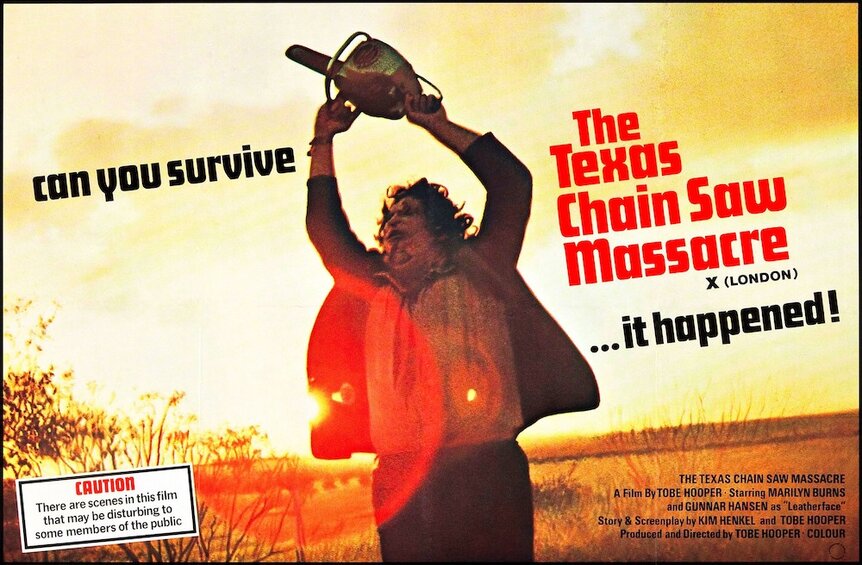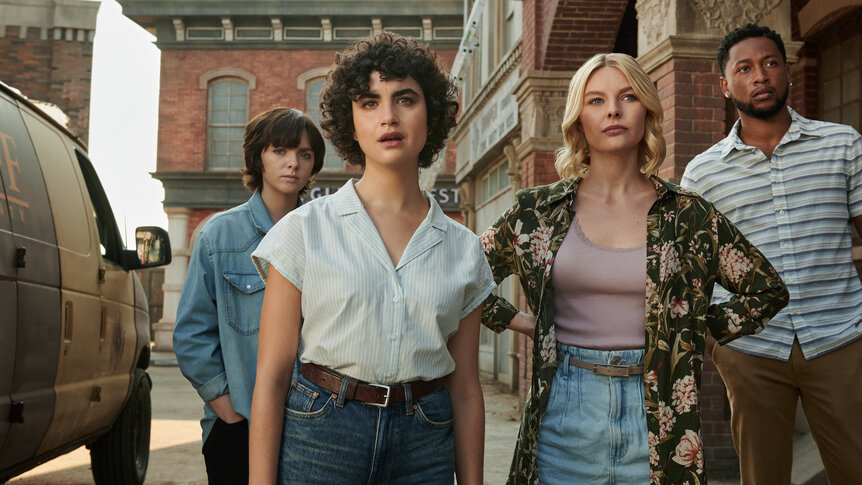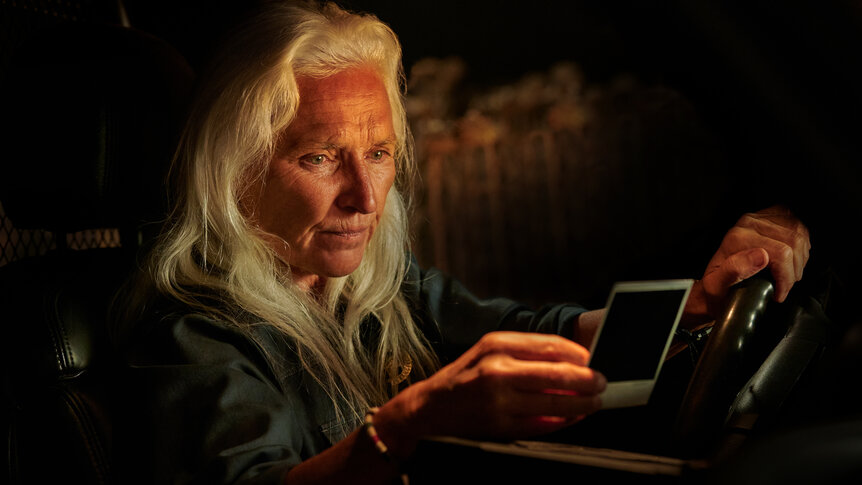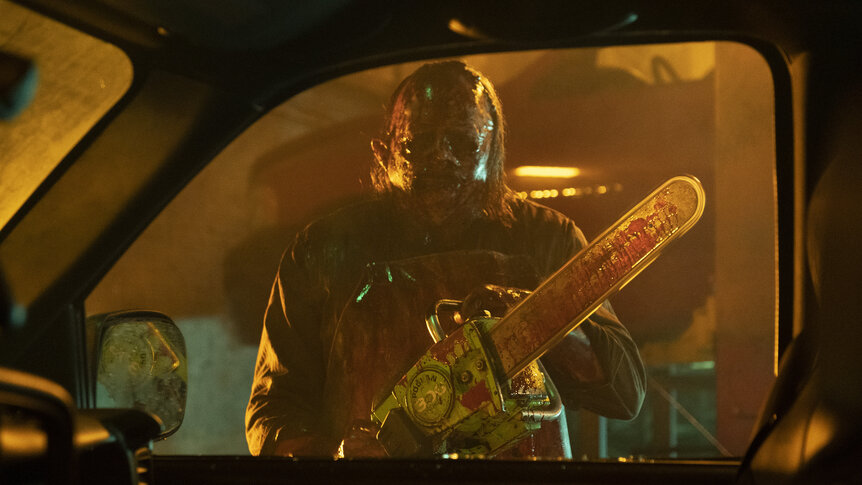Create a free profile to get unlimited access to exclusive videos, sweepstakes, and more!
'Texas Chainsaw Massacre': Director David Blue Garcia on that messed-up ending
Leatherface is back and more bloodthirsty than ever!
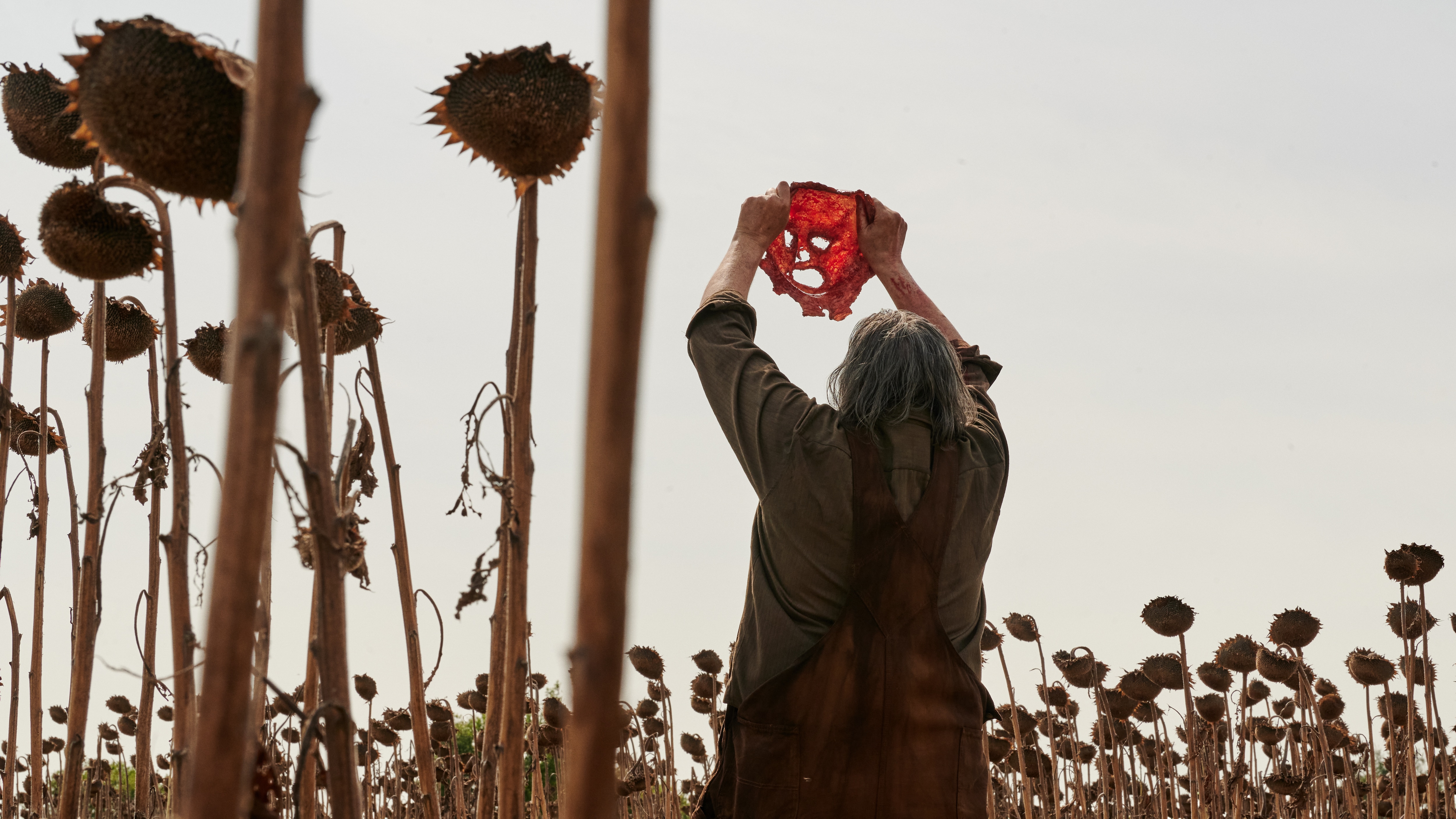
Director David Blue Garcia (Tejano) came across the original 1974 version of The Texas Chainsaw Massacre as a child in middle school while innocently flipping through television channels. The movie, which helped pave the way for the slasher boom of the 1980s, scared the ever-loving bejesus out of the future filmmaker, but also left a profound creative impact.
"I was fascinated. It was so bizarre, so different, and I was sucked in," Garcia tells SYFY WIRE over Zoom. "And once Leatherface jumped onscreen, I was so terrified I turned it off. It took me five or ten minutes to have the courage to turn it back on and finish the movie because I knew if I didn’t, it would just haunt me forever."
***WARNING! The following contains major spoilers for Texas Chainsaw Massacre!***
Fast forward several decades later, to the summer of 2020, when the native Texan was tapped to helm a direct sequel to the seminal horror classic. After years of reboots, sequels, and prequels of varying quality, Leatherface would finally return in all his face-stealing glory. Now streaming on Netflix, Garcia's soft reboot — simply titled Texas Chainsaw Massacre — hails from Evil Dead and Don't Breathe alums Fede Álvarez and Rodo Sayagues, who came up with the screen story that led to the script from Chris Thomas Devlin.
Molded in the vein of David Gordon Green's recent Halloween reboot, the project ignores all of the franchise continuity, except the lore established by the '74 original. Not only that, but Kim Henkel (who co-wrote the OG movie with late director Tobe Hooper) agreed to return as a producer.
"When I got the job, my phone was ringing for two days straight. One of the first calls was Kim Henkel, and it was so surprising to get a call from him [and] to hear from the original screenwriter," Garcia recalls. "He was just like, ‘Hey, you know, I’m happy to have another Texan on this film. There hasn’t been a Texan on for a while.’ It’s Tobe Hooper, Kim Henkel, and me. So it was just good to have that Texan backing and that support and he was someone that I could text or call anytime during the production if I had a question about Leatherface behavior. Anything like that and he would answer. It was great to have him in my corner."
Set in the modern day Lone Star State, Texas Chainsaw Massacre follows a group of ambitious young entrepreneurs who make the rather fatal mistake of wandering into Leatherface's territory. When the safety and security of the orphanage in which he's been living for the last 50 years (overseen by Alice Krige's oxygen-dependent Mrs. Mc) is suddenly threatened, the volatile man-child (now played by Mark Burnham) breaks out his iconic weapon of choice and goes to town on a new group of hapless victims.
It seems advanced age has no discernible effect on his killing prowess. Despite the fresh setting and cast of characters, the film contains a plethora of callbacks and Easter eggs, including the return of John Laroquette as the narrator, albeit in a more meta fashion.
"There’s nothing to direct. The guy is a master," Garcia says. "He comes onto the ADR session and he’s like, ‘Alright, where is it? Ok…’ And he just goes right into it. He sounded exactly the same as he did all those years ago, which is just incredible. Being a director, I had to say something. After that first take, I said, ‘Ok, it was great! One more for safety.’ And he laughed because he knew he got it, but he was gracious enough to give me another one. Of course, I used the first take."
Another familiar player is Sally Hardesty, the only survivor of the first movie. Sally's original actress, Marilyn Burns, unfortunately passed away in 2014 at the age of 65, which prompted the filmmakers to recast the role with Olwen Fouéré (The Northman). Much like Laurie Strode over in the revamped Halloween universe, Sally's been patiently waiting for a rematch with her own unstoppable slasher villain.
"I think they did a great job in the script of making her a part of this story, but not making her the main part of the story," Garcia explains. "It’s really great that you don’t have to have seen the original for this movie to make sense. This movie exists on its own if you want it to, but it’s also gonna hopefully encourage new fans to go back and watch the original and get into the lore of this character, and see the history and the family and all that stuff. So I think it was great to include her and show the rest of her journey."
Before Sally shows up to lend a hand in the fight, however, Leatherface goes on an absolute rampage, which includes the film's central gory set piece: A legitimate massacre on a party bus.
When a group of drunk millennials threaten to cancel the mass murderer, he simply cuts through them all like tissue paper. According to Garcia, the slaughter on the bus was not in the original script.
"Fede realized, ‘We need a massacre in this movie!’ So they came up with and added it to the film," the director reveals. "When I read it on the page, obviously I was like, ‘Ok, this is gonna be an iconic scene and I need to make the most of it.’ ... I do my own storyboards, so I started drawing thumbnail storyboards for the bus massacre. Just kind of creating that sequence every weekend until we shot it."
As with any modern Hollywood spectacle, this sequence required a mixture of practical and CGI effects, though Garcia and his team tried to get as much of the blood and guts in-camera as they could.
"Every shot of gore has a lot of practical in it, if not 100 percent," he says. "But we also did have to enhance with visual effects and there’s some shots of a chainsaw going into people and cutting them in half that are clearly [VFX]. You need some visual effects for that. Because we’re not hiding…we’re not using old school camera tricks for some of those shots. That’s all a really good combination of practical and visual effects. Our visual effects team spent a whole weekend just filming different types of blood and gore against green screens so they could take those physical shots and put them in the movie as well, so we weren’t using CGI blood or anything like that."
If you've already seen the movie, you might want to go back and scrub through each frame of the massacre for little visual treats.
"There’s a couple flashes of lightning where you can see some interesting things in the windows. I think they’re only a frame or two long, so you really need to be looking," Garcia teases. "Also, if you look on the cell phones during the Instagram Live, you’ll see some messages and comments from some special friends, including myself and Fede Álvarez and some other people who worked on the movie. In the trailer, you saw the ‘Pop. 1974’ on the Harlow sign as a nod to the original. Sally in the sunflower field at night, framed against those headlights, to me, is like a visual homage to one of the scenes from the first film. There’s just so many little things like that."
Speaking with SYFY WIRE last year about Don't Breathe 2, Álvarez talked about how funny the horror genre is to him as someone who works behind the camera. Garcia certainly agrees with that sentiment, stating:
"I didn’t watch a whole lot of horror movies growing up. And so, I’m not de-sensitized. I’m very sensitive to horror. So when I watch a horror movie now, I can still get really freaked out. But when you’re making the sausage and you’re seeing the artifice of it and you’re seeing the prosthetic head or the arm — you’re seeing the way it’s done — it’s definitely not scary or even gruesome. I started to question my sanity when I would be laughing at some of the goriest kills and things we were filming. I’m just behind the monitor cracking up and I’m like, ‘I think I’m losing it because this should not be funny to anyone.’ But it was also 3AM in Bulgaria."
The second Texas Chainsaw Massacre project to be filmed in Bulgaria (Garcia refers to it as "the Texas of Eastern Europe") after 2017's Leatherface, the Netflix endeavour was one of very few productions to wrap filming without any positive COVID-19 cases on set. The only downside was that the ever-present face masks created a humorous disconnect between director and Bulgarian members of the crew.
"I’m very sarcastic usually and no one could read my sarcasm because of the mask and also because Bulgarians have a different sense of humor that doesn’t include sarcasm," Garcia explains. "So it was interesting getting through that, but I remember one anecdote where there’s a scene under the crawlspace where the chainsaw hits a sewage pipe and a bunch of sh** drops down over Sarah Yarkin. The Bulgarians brought me a bucket of sh** to approve visually and I looked at it and I said, ‘It’s good, but it needs more corn.’ I thought this was a joke and they were like, ‘Ok, ok.’ And they were laughing, so I thought they got the joke. Then they went away and came back with a sh** bucket full of corn! I had to tell them, ‘Sorry, you’ve gotta remove the corn, I was just joking and please ask me if I’m serious next time because I’m usually not.’"
Clocking in at a brisk 83-minute runtime, Texas Chainsaw seems to end on an upbeat note. Loving sisters Lila (Elsie Fisher) and Melody (Sarah Yarkin) defeat big bad Leatherface and make their leisurely escape in a self-driving Tesla. All seems bright for the two siblings — until the passenger window abruptly shatters and the hulking villain pulls Melody out of the car before cutting her head clean off.
"The hard part was, you’re timing it so that it feels like there’s two final girls," Garcia continues. "You want the audience to feel like, ‘Oh, well maybe that’s the difference. There are gonna be two final girls now.’ We started playing this happy music on the radio as they’re about to drive away and it really lets the audience’s guard down and they’re like, ‘Ok…we’re good.’ And then the window breaks and Leatherface comes and nope, one of them’s not gonna make it. Then we have this great homage to the final couple of shots of the first film where Sally’s getting driven away in the back of the truck and we have Lilah getting driven away in the Tesla — a self-driving [car], so it’s updated for 2022. And then, of course, we have the famous Leatherface dance."
It's a pretty downbeat ending that segues into a flashy and colorful end credits sequence comprised of the franchise's most iconic imagery. The song that plays during the conclusory titles (a synth-inspired throwback to the 1980s) was born out of a desire to let the viewer release some of their tension while bring Leatherface more in line with the likes of Michael Myers and Jason Voorhees.
"That was created as like, ‘If Leatherface had a theme song.’ You know, some of the other ‘80s slasher villains have theme songs, but Leatherface has never really had one," Garcia says. "What would that sound like? And so, we put that in there and the movie is such a downer and it ends on such a down note, that we don’t want the credits to feel like more of a downer, so it kind of goes a little more uplifting so people can smile and feel relaxed that they survived that crazy ride."
To recap: Lila is scarred for life and Leatherface is still out there and deadlier than ever. A sequel has yet to be confirmed, but the door is open if Netflix wants to tear through flesh, bone, and viscera again.
"There’s so many directions you can go with this character," Garcia answers when asked about where he'd like to see the rebooted franchise go with the character. "There’s also lots of prequel territory. What happened in the last 50 years? This is an iconic character and no one can ever kill him. He’s always going to keep coming back into the movies. So we’ll see him again for sure ... I think there’s a lot to explore [in terms of] what he’s been up to and there’s a line in the movie where [Mrs. Mc] talks about how he doesn’t do well outside. So she knows what he can get up to and I imagine that while he’s lived at that orphanage, he’s caused some trouble."
So what makes Leatherface and the fetid house he built so enduring? Why does this franchise continue to pry itself off the proverbial meat hook?
"There’s something about this story that people think is real and could’ve happened," Garcia concludes. "Growing up in Texas, actually driving around those country roads and seeing that random house a mile off the country road surrounded by some brush, I was even more scared. I was like, ‘This seems like something that could exist.’ I just think there’s something really fun about it and it generates the zeitgeist and just sticks in your brain. That’s why these stories will always be told."
Texas Chainsaw Massacre is now streaming on Netflix.
